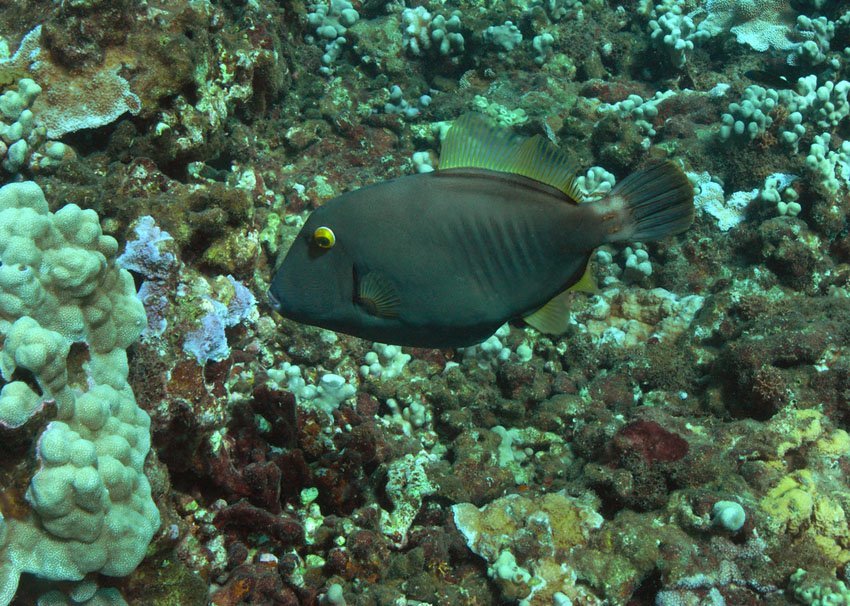Filefishes

Filefishes (Monacanthidae) Overview
Filefishes have narrow bodies, small mouths with sharp teeth and a stout dorsal spine with often times small, thornlike spikes which they raise when they feel aroused or threatened.
They swim by waving their dorsal and anal fins and can swim forward and backward. Filefishes are generally omnivorous and some of them can change their color quickly to match their surroundings.
Their Hawaiian name is 'o'ili, which means “sprout” or “come up.” This probably refers to their frequently raised dorsal spine. There are seven species of filefishes in Hawaii, of which three are endemic.
Frequently Asked Questions
What makes filefishes unique?
Filefishes have narrow, laterally compressed bodies and a prominent, sharp dorsal spine. They can raise this spine when threatened, and some species can rapidly change color to blend into their surroundings.
How do filefishes swim?
Filefishes swim using undulating movements of their dorsal and anal fins. This allows them to move forward and backward with precision, especially around reefs and crevices.
What do filefishes eat?
Most filefishes are omnivores. They feed on algae, small invertebrates, coral polyps, and sponges, depending on the species and their environment.
What is the Hawaiian name for filefish?
The Hawaiian name for filefish is 'o'ili, meaning “sprout” or “come up.” This likely refers to the fish's habit of raising its dorsal spine when alert or defensive.
How many filefish species are in Hawaii?
There are seven species of filefishes found in Hawaiian waters, of which three are endemic - found nowhere else in the world.








